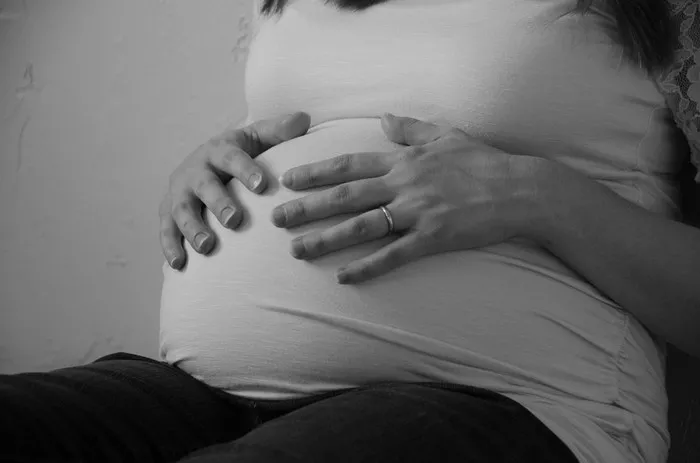Fibroids are non-cancerous growths that develop in the muscular walls of the uterus. They are one of the most common gynecological conditions affecting women of reproductive age. While some women with fibroids may not experience any noticeable symptoms, others may face various challenges, such as heavy menstrual bleeding, pelvic pain, and in some cases, spotting between periods. Spotting, which refers to light bleeding or staining outside of a woman’s regular menstrual cycle, can be a sign of an underlying issue, including the presence of fibroids. In this article, we will explore why fibroids cause spotting, the different types of fibroids that can lead to this symptom, and the treatment options available.
Understanding Fibroids
Before delving into why fibroids can cause spotting, it is essential to understand what fibroids are and how they develop. Fibroids, also known as leiomyomas or myomas, are abnormal growths made up of muscle and fibrous tissue that develop within the uterus. These growths can vary in size from tiny to large, with some becoming quite extensive, distorting the shape of the uterus. Fibroids can be located in various parts of the uterus, including:
- The inner lining (submucosal fibroids)
- The muscular layer (intramural fibroids)
- The outer layer (subserosal fibroids)
Fibroids can be asymptomatic, meaning they do not cause any noticeable symptoms. However, when symptoms do occur, they can include heavy menstrual bleeding, pelvic pressure, frequent urination, back pain, and even infertility. Spotting, or light bleeding between menstrual periods, is a symptom that can sometimes occur in women with fibroids.
What Causes Spotting in Women with Fibroids?
Spotting in women with fibroids can occur for several reasons. The underlying cause of the bleeding is often related to the location, size, and type of fibroid. Let’s explore the most common factors that contribute to spotting in women with fibroids.
1. Hormonal Imbalances
Hormonal fluctuations play a significant role in the development and growth of fibroids. Estrogen and progesterone are the primary hormones involved in regulating the menstrual cycle. They also influence the growth of fibroids. When there is an imbalance in these hormones, fibroids can grow more rapidly and cause various symptoms, including abnormal bleeding or spotting.
During menstruation, the lining of the uterus thickens in response to hormonal changes. If a fibroid is located near the inner lining of the uterus, it may interfere with the normal shedding of the uterine lining, leading to irregular bleeding and spotting. Additionally, hormonal imbalances can cause changes in the blood vessels within the uterus, making it more prone to bleeding, even outside of the regular menstrual cycle.
2. Submucosal Fibroids and Spotting
Submucosal fibroids are the type of fibroids most commonly associated with spotting. These fibroids grow just beneath the uterine lining and can protrude into the uterine cavity. Because of their location, submucosal fibroids can disrupt the normal function of the uterus, leading to irregular bleeding.
Submucosal fibroids are particularly problematic because they can cause a variety of bleeding issues, including heavy menstrual periods, prolonged periods, and spotting between cycles. The presence of these fibroids can irritate the uterine lining, resulting in light bleeding or spotting that occurs at times when it is not part of a woman’s regular menstrual cycle.
3. Fibroid Size and Irritation
The size of fibroids can also impact their ability to cause spotting. Larger fibroids, particularly those that press against the uterine lining, may cause irritation and inflammation of the uterine tissue. As a result, this irritation can cause light bleeding or spotting. The increased pressure exerted by large fibroids on the uterine walls can disrupt the normal functioning of the uterus and cause blood vessels to rupture, leading to irregular bleeding.
In some cases, fibroids may cause more intense bleeding, which can lead to heavy menstrual periods or bleeding between periods. The more fibroids there are and the larger their size, the more likely they are to cause changes in the menstrual cycle and contribute to spotting.
4. Interference with the Uterine Blood Supply
Fibroids have a unique blood supply that differs from the normal uterine tissue. As fibroids grow, they require a steady supply of blood to sustain their growth. However, the blood vessels that supply the fibroids are often more fragile and prone to rupture than those of the surrounding uterine tissue. When these blood vessels break or leak, they can cause spotting or light bleeding.
This is especially true for large fibroids or fibroids that are located near the inner lining of the uterus. The bleeding caused by the rupture of blood vessels can result in light spotting, which may be intermittent or persistent, depending on the severity of the blood vessel rupture.
5. Endometrial Changes Due to Fibroids
Fibroids can cause changes in the endometrium (the inner lining of the uterus) that can result in abnormal bleeding. For example, fibroids can alter the normal shedding of the endometrial lining, causing it to become thicker or less uniform. This disruption can lead to irregular shedding of the lining and cause spotting between periods.
Fibroids can also cause inflammation within the uterus, leading to an increased likelihood of spotting. As the fibroids interfere with the normal functioning of the uterus, the endometrial tissue may respond with bleeding or spotting as part of the inflammatory process.
6. Other Potential Causes of Spotting with Fibroids
While fibroids are a common cause of spotting, other factors could be at play. It is important to rule out other possible causes of irregular bleeding. These can include:
- Infection or inflammation of the uterus or cervix
- Cervical polyps or other growths
- Hormonal contraceptives or other medications
- Pelvic inflammatory disease (PID)
- Endometrial hyperplasia or cancer (in rare cases)
It is essential to consult with a healthcare provider if you are experiencing spotting, especially if it is persistent or accompanied by other symptoms, such as pelvic pain or unusual discharge. A gynecologist can perform diagnostic tests, including ultrasounds or hysteroscopies, to determine whether fibroids are the cause of the spotting or if another condition may be responsible.
When to Seek Medical Help
If you are experiencing spotting and have been diagnosed with fibroids, it is important to monitor your symptoms and seek medical attention if necessary. Spotting may be a sign that the fibroids are growing or that there is another underlying issue that requires attention. While fibroids are usually benign, they can lead to complications if left untreated, such as anemia, fertility problems, or a decrease in quality of life.
If you are concerned about spotting or other symptoms related to fibroids, make an appointment with your gynecologist. They can evaluate your condition and recommend treatment options, which may include medications, non-invasive procedures, or surgery.
Conclusion
Spotting in women with fibroids is a common symptom that can be caused by various factors. Hormonal imbalances, submucosal fibroids, the size and irritation of fibroids, and interference with the uterine blood supply can all contribute to light bleeding between menstrual cycles. While fibroids are often the primary cause of spotting, it is essential to rule out other conditions that may lead to abnormal bleeding.
If you experience spotting or other symptoms related to fibroids, it is important to consult with a healthcare provider for proper diagnosis and treatment. With appropriate care, many women with fibroids can manage their symptoms and improve their overall health and well-being.
Related topics:
Will Fibroids Go Away on Their Own

























